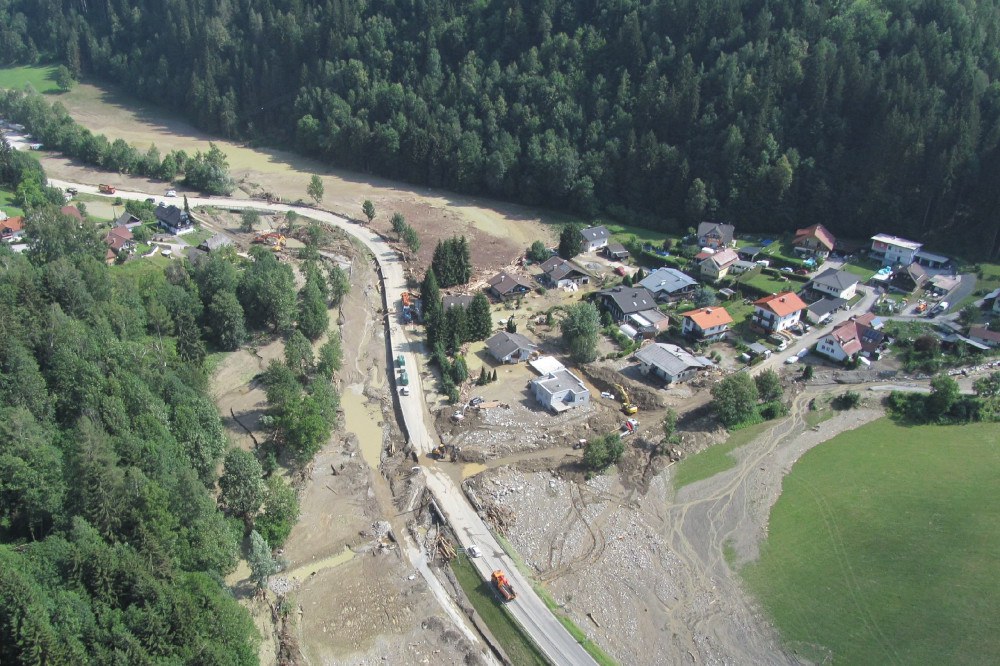News
After the flood

The summer of 2022 saw no stone left unturned in Carinthia’s Gegendtal valley: persistent heavy rain turned mountain streams into rivers that swept everything away – cars, tree trunks, roads, bridges and even a hydroelectric power plant that had been in operation for more than a hundred years. “This power station no longer existed – no foundation wall, no building, no supply line”, states Dietmar Rossmann, Managing Director of the Nockberge Biosphere Reserve. “There was also one death.” Power outages for 1,500 households, with damage to over 100 residential buildings and 20 commercial properties: the hazard zone plan had been confirmed. How can such destruction be avoided and what can biosphere reserves contribute to its prevention? On 4 and 5 April 2024, an international group of researchers and biosphere reserve teams from Austria, Germany and Switzerland held a workshop and site visit to find out.
Biosphere reserves as networkers
During a flood, an avalanche, a storm or drought, the emergency services and authorities are in particular demand – biosphere reserves can do little during these times. “Biosphere reserves have so far been neglected in natural hazard management because they deal with other issues, such as ecology”, explains project manager Thomas Thaler from the International Institute for Applied Systems Analysis (IASA) in Laxenburg/A. “Biosphere reserves could play an important role in long-term prevention in particular”, adds Wolfgang Pfefferkorn, who is supporting the project on behalf of CIPRA. With training, information and networking work, biosphere reserves can convince the local population of how important intact ecosystems are in protecting against extreme weather events. As Angelika Abderhalden from the Engiadina Val Müstair biosphere reserve in Switzerland points out, it is possible to “combine flood protection and revitalisation projects”. In the Gegendtal valley in Carinthia, the public sector also bought up land after the floods and demolished houses to create more space for the river.
Further information on the project:



